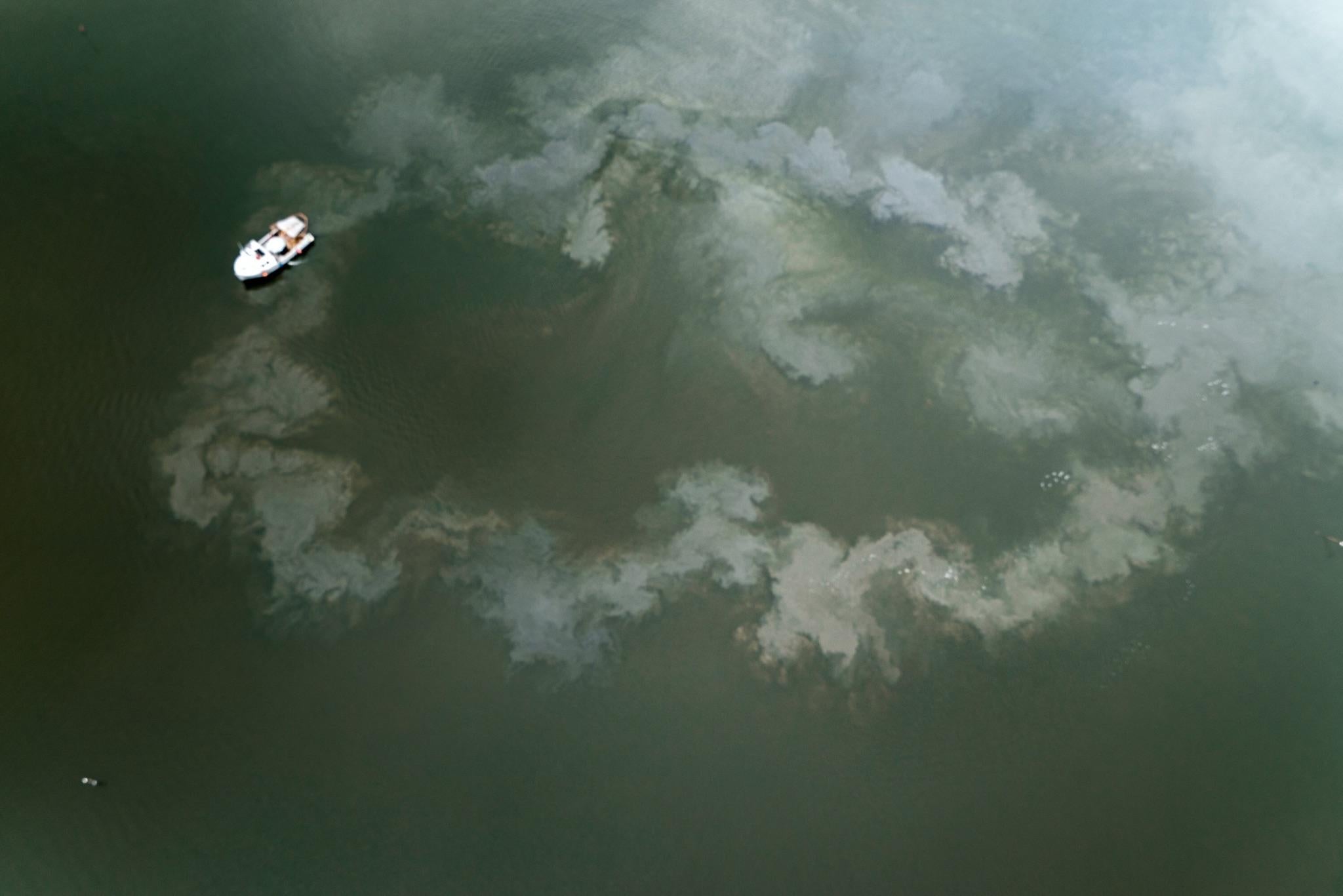Shellfish Harvesters and Conservationists Challenge U.S. Fish and Wildlife Service’s Refusal to Oversee Industrial Shellfish Dredging in Long Island Refuge
Lawsuit takes aim at agency’s long-term failure to examine whether industrial shellfish dredging conflicts with Refuge’s wildlife-protection purposes
Contact
The North Oyster Bay Baymen’s Association and the Center for Food Safety, represented by Earthjustice, today filed a lawsuit against the U.S. Fish and Wildlife Service in the U.S. District Court for the Eastern District of New York, challenging the Service’s long-term failure to oversee industrial shellfish dredging in the Congressman Lester Wolff Oyster Bay National Wildlife Refuge.
The Refuge includes over 3,200 acres of submerged lands located along the north shore of Long Island, near the Town of Oyster Bay in eastern Nassau County. It was established to protect migratory birds, fish, and other wildlife, and it supports iconic and protected species including bald eagles, osprey, shorebirds, and sea turtles. Historically, the Refuge provided important habitat for shellfish, yielding about 90% of New York State’s total oyster harvest and 40% of its hard clam harvest each year — but shellfish populations in the Refuge have suffered a sharp decline.
In February 2022, the Service refused to reevaluate the effects of industrial shellfish dredging in the Refuge as required by law — even though reevaluation is nearly two decades overdue and new evidence indicates that industrial shellfish dredging damages aquatic habitat, degrades water quality, and harms birds, fish, and other wildlife.
“A healthy harbor is a productive harbor,” said Bill Painter, president of the North Oyster Bay Baymen’s Association. “We need the U.S. Fish and Wildlife Service to fulfill its legal obligations to watch over the Oyster Bay National Wildlife Refuge if we want shellfish and all other wildlife to survive and thrive there.”
Federal law requires the U.S. Fish and Wildlife Service to ensure that the purposes of each National Wildlife Refuge are carried out. Accordingly, the Service may allow use of a refuge only if it first determines that the use is “compatible” with the refuge’s purposes. It must reevaluate ongoing uses at least once every 10 years — and more frequent reevaluation may be required if conditions change or new information about the effects of a use becomes available. The Service may request modifications to an ongoing use to ensure that it remains compatible. In addition, the Service must issue special use permits to authorize commercial use of a refuge.
The Town of Oyster Bay has authority to allow shellfish harvesting in the Refuge, provided that it does not interfere with the Refuge’s wildlife-protection purposes. Despite evidence that industrial shellfish dredging does, in fact, interfere with the protection of wildlife, the town has exercised its authority to allow the use of hydraulic dredges, which deploy powerful water jets to loosen sediment and dislodge shellfish, and suction dredges, which operate like large vacuum cleaners, using a hose to suction up sand, shellfish, and other creatures from the seafloor.
Federal and state agencies, including the New York State Department of Environmental Conservation, have expressed concern that industrial shellfish dredging damages habitat for fish and other species.
“With the ongoing extinction crisis of millions of species on Earth, we cannot sacrifice vital wildlife habitat for the profit of a few,” said Amy van Saun, senior attorney with Center for Food Safety. “I’ve seen firsthand how unchecked industrial commercial shellfish aquaculture can harm aquatic ecosystems that both people and numerous wildlife species rely upon. Our government is accountable to protect our Refuge and must do a better job.”
“The U.S. Fish and Wildlife Service is nearly two decades overdue in its obligation to reevaluate the effects of industrial shellfish dredging in the Refuge,” said Earthjustice attorney Ashley Ingram. “During the Service’s long delay, conditions have changed for the worse, and a steadily growing body of scientific evidence has raised serious concerns about harm to the Refuge. It’s time for the Service to do its job and start overseeing the Refuge as a sanctuary for birds and other wildlife.”
Industrial dredges can damage habitat by scraping the seafloor, leaving lasting scars, and erasing complex natural structures used by fish and other species for shelter and nursery areas. Industrial dredges also damage habitat by disturbing sand, silt, and clay on the seafloor and dispersing these materials into the water column. Suspended sediment churned up by industrial dredges can spread hundreds of meters from the site of original disturbance. As sediment re-settles, it changes the texture and composition of the seafloor, making it less suitable for fish and shellfish — and, thereby, harming the birds and other species that rely on fish and shellfish for food.
According to a survey commissioned by the Town of Oyster Bay, clam distribution in the bay declined by 5% from 2013 to 2018, meaning that clams now are present at fewer locations included in the survey area. During the same period, clam abundance declined by 44%, meaning that there now are significantly fewer clams overall.
Today’s lawsuit seeks to compel the Service to complete its long overdue statutory and regulatory responsibilities to oversee industrial shellfish dredging in the Refuge and to ensure the protection of vulnerable habitat and wildlife in one of New York State’s most culturally and ecologically significant coastal bays.

Additional Resources
About Earthjustice
Earthjustice is the premier nonprofit environmental law organization. We wield the power of law and the strength of partnership to protect people's health, to preserve magnificent places and wildlife, to advance clean energy, and to combat climate change. We are here because the earth needs a good lawyer.